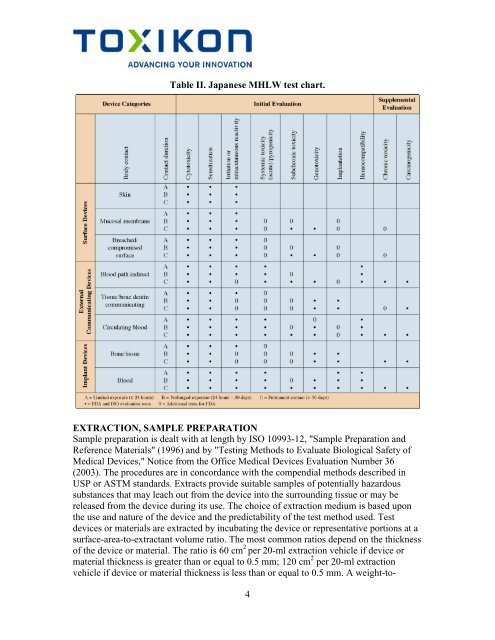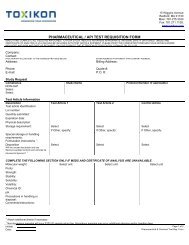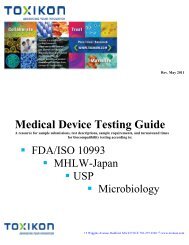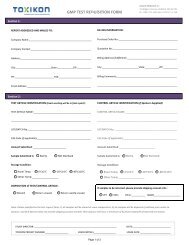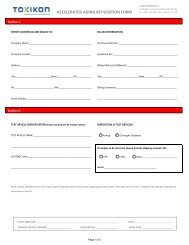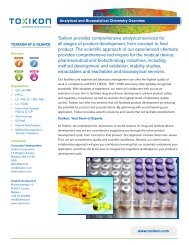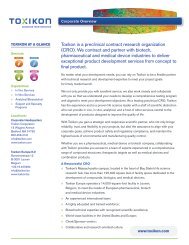Biocompatibility Safety Assessment of Medical Devices ... - Toxikon
Biocompatibility Safety Assessment of Medical Devices ... - Toxikon
Biocompatibility Safety Assessment of Medical Devices ... - Toxikon
You also want an ePaper? Increase the reach of your titles
YUMPU automatically turns print PDFs into web optimized ePapers that Google loves.
Table II. Japanese MHLW test chart.<br />
EXTRACTION, SAMPLE PREPARATION<br />
Sample preparation is dealt with at length by ISO 10993-12, "Sample Preparation and<br />
Reference Materials" (1996) and by "Testing Methods to Evaluate Biological <strong>Safety</strong> <strong>of</strong><br />
<strong>Medical</strong> <strong>Devices</strong>," Notice from the Office <strong>Medical</strong> <strong>Devices</strong> Evaluation Number 36<br />
(2003). The procedures are in concordance with the compendial methods described in<br />
USP or ASTM standards. Extracts provide suitable samples <strong>of</strong> potentially hazardous<br />
substances that may leach out from the device into the surrounding tissue or may be<br />
released from the device during its use. The choice <strong>of</strong> extraction medium is based upon<br />
the use and nature <strong>of</strong> the device and the predictability <strong>of</strong> the test method used. Test<br />
devices or materials are extracted by incubating the device or representative portions at a<br />
surface-area-to-extractant volume ratio. The most common ratios depend on the thickness<br />
<strong>of</strong> the device or material. The ratio is 60 cm 2 per 20-ml extraction vehicle if device or<br />
material thickness is greater than or equal to 0.5 mm; 120 cm 2 per 20-ml extraction<br />
vehicle if device or material thickness is less than or equal to 0.5 mm. A weight-to-<br />
4


